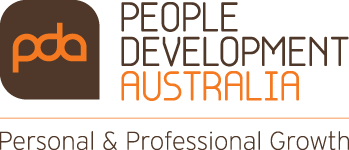Many of us don’t think about how we think, yet our thinking strategies are of prime importance as leaders. We make decisions minute by minute, we reflect on direction and we ruminate about the past and are anxious about the future. We have elements of self-doubt and we have a range of thoughts about the relationships around us. Our thinking also constructs many of the emotions we have and the behaviours we exhibit.
Neuroscience is bringing its own suite of leadership learnings, which now inform many of our development programs. Resilience, decision making, leader behaviour, focus management, relationships and emotional intelligence are now informed by a decade of research in how our brain impacts our effectiveness. In a nutshell, it suggests that what you experience of the outside world beings inside your head, not the other way around.
Thoughts are not facts! We cannot control which thoughts we have, but we can control which thoughts we engage with. Just as our heart beats and our lungs breathe, our brain creates thoughts. It is our job to separate the thoughts that empower us to be our best and manage the work we do and those thoughts that don’t.
The brain processes around 11 million bits of information per second (Wilson, 2012). Given the vast information, the brain is processing from both the internal and external environment, the brain has been described as a ‘prediction organ’. It grabs about 10% of the information it needs of the cues around us from our senses and our body and literally predicting about 90% (Wolpe and Rowe; 2015) of the rest of the information.
Feldman Barrett (2017) in her book “How emtions are made” suggests the brain is a bit like a blind and deaf scientist that forms predictions or ‘hypotheses’ and tests these against sensory input via scraps of information from the light, vibrations, and chemicals that become sights, sounds, smells and so on. It’s always making a slew of predictions, just as a scientist makes competing hypotheses. Like a scientist, your brain uses knowledge (past experience) to estimate how confident you can be that each prediction is true. Your brain then tests its predictions by comparing them to incoming sensory input from the world, much like a scientist compares hypotheses against data in an experiment. If your brain is predicting well, then input from the world confirms your predictions. Usually, however, there is some prediction error, and your brain, like a scientist has some options. It can act like a responsible scientist and change its predictions to respond to the data. Your brain can also be a biased scientist and selectively choose data that fits the hypotheses, ignoring everything else. Your brain can also be an unscrupulous scientist and ignore the data altogether, maintaining that its predictions are reality.
Our predictions are so vivid and immediate that they compel us to believe that what we experience is the world as it is, when you actually experience a world of your own construction. The classical view of emotions is also similar and “triggered” by the external environment we live in. There is good evidence that emotions are not reactions to the world. You are not a passive receiver of sensory input but an active constructor of your emotions according to Feldman Barrett (2017). From sensory input and past experience, our brain constructions meaning and prescribes action. If you didn’t have thoughts that represent your past experience, all your sensory inputs would just be noise. You wouldn’t know what the sensations are, what caused them, nor how to behave to deal with them. Your brain makes meaning of sensations, and sometimes that meaning is an emotion.
It doesn’t matter whether you’re choosing your words when interacting in a meeting, between a decision to move forward on a project or not or between crafting an angry email or restraining yourself. Your everyday decisions are driven by a loudmouth, mostly deaf scientist who views the world through affect-coloured glasses.
So, what’s the answer? The implementation of proactive thinking strategies is nothing new. Cognitive Behaviour Therapy, reframing thinking, labeling thoughts, reappraisal and mindfulness are all currently embedded in our leadership development. What is new, is a myriad of new concepts, models and frameworks in how we view thinking and the activity of the brain and the chemistry of the brain and body. Through neuroscience research, we now have a growing base of evidenced on ways to keep focused, on self-regulation, on productivity and engagement. Research that helps us make sense, helps up develop greater self-awareness and helps us be the responsible scientist of our own thoughts, emotions and behaviours.
We’re the ones – the thinker rather than the thought – who get to choose the actions that will best serve the leader we want to be and the things we truly value.
Interested in a development program for your workplace on Neuroscience? See our Neuroscience in the Workplace workshop or our content on Neuroscience of Leadership program.
Peter Agnew is an executive coaching and psychotherapist and helps teams and leaders explore new perspectives on workplace behaviour

